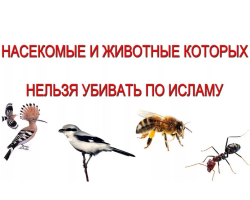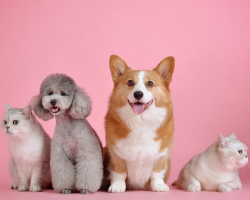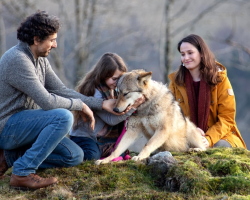Rachite does not pose a danger to the dog’s life, but the lack of treatment can lead to serious complications and complex deformations of the animal bones.
Content
- What is rickets in dogs and puppies and how to determine rickets in a dog?
- Puppies and dogs symptoms.
- Puppies and dog rickets: reasons
- Is rickets treated in dogs?
- What to do so that the dogs have paws straighten?
- How to treat rickets of puppies and dogs?
- Proxids of rickets in puppies and dogs
- Prevention of rickets in puppies and dogs
- Video: Dog Riccitis
In the conditions of improper maintenance and nutrition of the dog, such a disease of the musculoskeletal system as rickets may develop.
This disease rarely leads to death, but is fraught with its consequences. It is important to diagnose the disease at an early stage.
What is rickets in dogs and puppies and how to determine rickets in a dog?
Rickets - a complex disease, which is characterized by a violation of bone formation. This is due to a lack of minerals and vitamins in the process of bone formation. The disease most often occurs in young dogs.
You can determine the rickets by several parameters:
- lap size and shape
- a sagging back
- curvature or thickening of the joints
- the fragility of bones
- lameness
- soreness when moving
- trembling of the limbs
- uncertain, incorrect gait
- weak paws

Puppies and dogs symptoms.
Young individuals are most susceptible to the disease.
Important: in puppies growing with mom, rickets are rare. The kid receives from breast milk everything necessary for the full growth of bones.
If the cub is early excommunicated from the mother, it is possibly inferior and incorrect. The body receives vitamins and minerals in insufficient quantities. Problems arise in the formation of the skeleton and muscles.
Important: by noticing the problem at an early stage, you can prevent violations of bone formation in the future.
At first changes in behavior and preferences in food. The puppy becomes shy and restless. He is drawn to bite furniture, books and lick the walls. Diarrhea and constipation are possible.
Such symptoms are associated with impaired work of the gastrointestinal tract and nervous system.
The owner of the puppy needs to pay attention to and the movements of the baby. If there are violations in walking, a small pet is drowning to the side, it is clubfoot - this is the first signal about a developing disease. You must immediately seek a doctor’s consultation.

The patient's puppy has:
- fine
- thickening of the joints
- the weakness of the limbs
- bone deformation
- the teeth are weak, cut for a long time
Puppies and dog rickets: reasons
The causes of the disease are not fully defined. Some of the experts believe that dogs with poor heredity are subject to rickets, part - sees the problem in nutrition.
However, the main factors that contribute to the occurrence of the problem can be attributed:
- content in unsuitable conditions (raw and dark rooms)
- infutable nutrition
- sedomery

Is rickets treated in dogs?
Treatment of rickets is a complex and multi -stage process. It is almost impossible to cure an adult dog. With young animals, the chances are much higher.
Important: rickets do not lead to death and is treated. But for this, the owner needs to be patient.
What to do so that the dogs have paws straighten?
If deformation of the limbs occurs, it means that the rickets are quite neglected. As a rule, it is impossible to change the formed bones.
If a The dog is adult, treatment can facilitate the course of the disease, but will not correct the consequences of the disease. If a four -year -old began to be treated at the first suspicions of rickets, it will be possible to fix the shape of the bone.
This requires an integrated approach. The treatment is laborious and long. In addition to drugs and nutrition adjustments, you need to do massages and independently train the bones.

How to treat rickets of puppies and dogs?
Treatment more effectively until the dog has reached 1 year, when the formation of the backbone can still be influenced.
Important: if the disease is noticed in the early stages, treatment can be reduced to nutrition correction.
Owners are recommended to feed the puppy with special feeds that are rich in vitamins and minerals. In some cases, calcium and vitamin D are prescribed, as well as fish oil. In the diet of the dog, raw meat, cottage cheese, raw yolk, milk, porridge should be present.
Stimulates the production of vitamin D and quartz irradiation. At the beginning of the treatment for 2-3 minutes, then the dose increases, reaching to 20 minutes of irradiation. The course lasts up to three weeks. It is possible to repeat the procedures in a couple of months.
For a sick baby, walks in the sun are needed without unnecessary loads.
If the puppy almost does not walk, massages and salt wiping are possible, which will accelerate the metabolism.

In adulthood It is impossible to cure rickets in a dog. The skeleton has already been formed and it cannot be adjusted.
In this case, training aimed at the formation of muscle mass is possible so that the skeleton can withstand the load.
The animal is prescribed calcium, food supplements that will help to resume the balance of vitamins and minerals.
Among the drug methods of treatment - the use of drugs:
- Cathosal
- Caltsidi
- Borgluconate
- Trith
- Gamavit
- Caphorus
- Tettle
Important: before using drugs, it is necessary to consult a doctor.

Proxids of rickets in puppies and dogs
The main problems that rickets can lead to:
- Deformation of the hip joint and chest.
- In bitches - a complication of pregnancy and childbirth.
- Due to the seals on the ribs, breathing becomes painful.
- Sometimes there are convulsions and seizures. In the case of a protracted seizure, the puppy may die.
- With rickets, the animal experiences discomfort and pain.
- In the case of incorrect treatment, the dog may remain disabled.
Prevention of rickets in puppies and dogs
In order to prevent the disease, it is necessary to give the dog anti -rachite complementary foods. This is best done when the bitch is still in position.
IMPORTANT: Anti -copty nutrition of a bitch and puppies should continue after childbirth.
Be sure to monitor the fullness of nutrition when the puppy is excommunicated from the mother.

The crushed eggshell, fittin or chalk. Little pets must be given raw milk with a broken egg.
Important: cereals should not be the main nutrition, since in large quantities they wash out calcium from the body.
For a small puppy, the norm is a five -rat nutrition. The growing organism needs beneficial substances.
The owner needs loop the puppy physically: frequent long walks in the fresh air, an obstacle run, active games. Thus, the backbone and muscle mass are being developed and correctly formed.
Turning puppies to dry food, it should be remembered that it should be professional, rich in all the substances necessary for the growing organism. In this case, with a high probability, it will be possible to avoid rickets.







